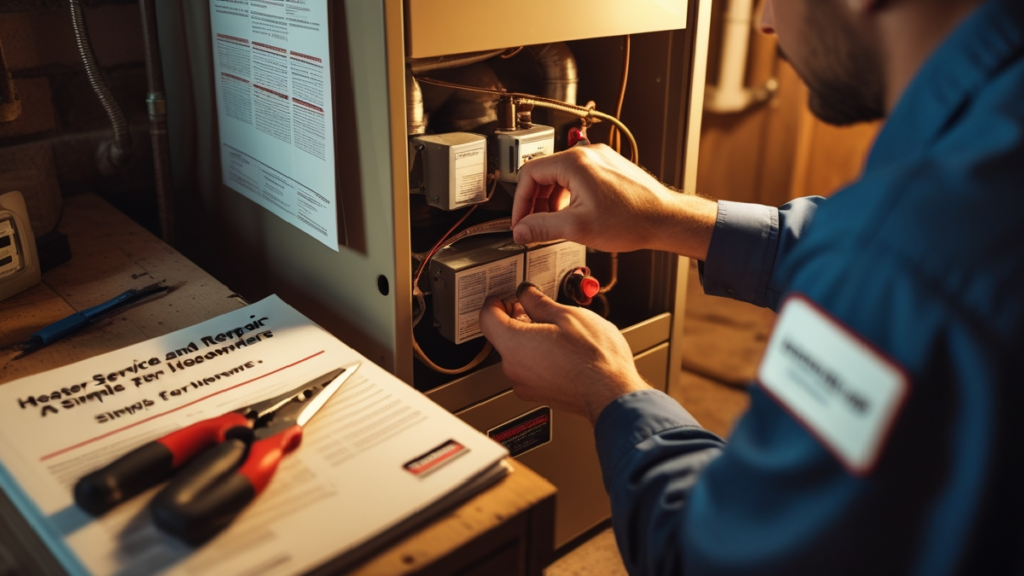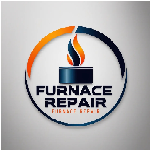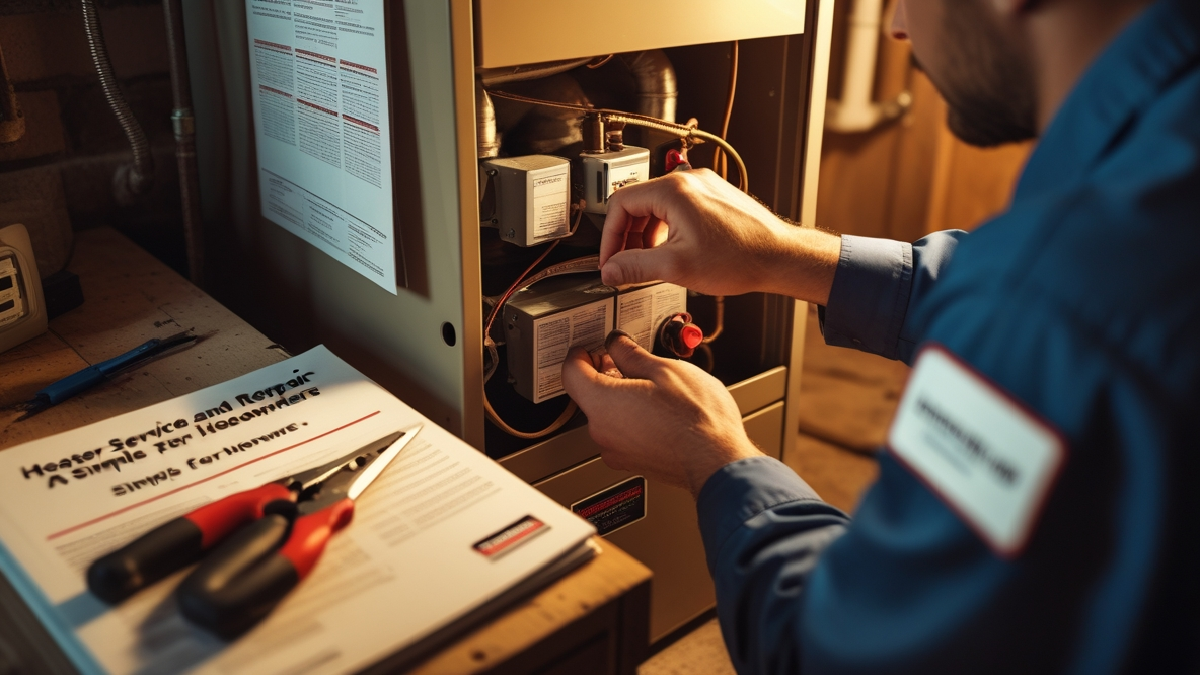Heater Service and Repair: A Comprehensive Guide for Homeowners
As the chill of winter approaches, ensuring that your heater is functioning efficiently becomes a top priority for homeowners. A well-maintained heater not only provides comfort during cold months but also helps save on energy bills, reduces the risk of unexpected breakdowns, and extends the lifespan of your heating system.

Whether you are a seasoned DIY enthusiast or a homeowner just beginning to understand the basics of heater maintenance, this comprehensive guide aims to equip you with practical knowledge and step-by-step instructions for heater service and repair. Heater Service and Repair Remember, safety is paramount—if at any point you feel unsure or uncomfortable, it’s best to contact a licensed professional. Heater Service and Repair Let’s explore how you can keep your heater running smoothly and efficiently throughout the year.
Understanding Your Heater: Types and Basic Components
Different Types of Heaters Commonly Used in Homes
Before diving into maintenance and repair procedures, it’s essential to identify the type of heater you have. Most residential heating systems fall into one of three main categories: furnaces, heat pumps, and electric baseboard heaters. Furnaces are the most prevalent in U.S. homes, typically fueled by natural gas or oil, and are known for their powerful heating capacity.
Heat pumps are increasingly popular due to their energy efficiency; they work by transferring heat from outside to inside, even in colder weather, making them ideal for moderate climates. Electric baseboard heaters are simple, compact units that are easy to install and maintain, often used as supplementary heat sources or in specific rooms. Knowing your heater type helps you follow the correct maintenance procedures and identify potential issues more accurately.
Key Components of a Typical Heater Service and Repair
A standard heater comprises several vital components that work together to produce and distribute heat. The heat source varies depending on the type—furnaces use burners fueled by gas or oil, while electric heaters rely on electric heating elements. A blower or fan is responsible for circulating warm air throughout your home.
Filters trap dust and allergens, improving indoor air quality and protecting internal parts. Thermostats regulate the temperature, signaling the heater when to turn on or off. Safety controls, such as limit switches and pressure sensors, prevent overheating or dangerous pressure buildup. Understanding these components is crucial for troubleshooting problems, performing routine maintenance, and ensuring your heater operates safely and efficiently.
Routine Heater Maintenance for Optimal Performance
Regular Inspection and Cleaning of Filters
One of the simplest yet most effective maintenance tasks is inspecting and replacing filters regularly. Dirty or clogged filters restrict airflow, forcing your heater to work harder and consume more energy, which can lead to higher utility bills and accelerated wear and tear.
Depending on the filter type—fiberglass, pleated, or electrostatic—it’s recommended to check filters at least once a month during peak heating season. Replace or clean filters every 1 to 3 months, or more frequently if you have pets or allergies. Maintaining clean filters improves indoor air quality, enhances heater efficiency, and prolongs the life of your system.
Cleaning the Heater and Ventilation Areas
Dust, debris, and pet dander can accumulate around your heater, affecting its performance and safety. Turn off the power and carefully clean the exterior surfaces with a soft cloth or brush. Heater Service and Repair If accessible, clean internal components such as blower wheels and vents to prevent dust buildup.
Ensure that all vents, registers, and intake/exhaust areas are free of obstructions. Regular cleaning promotes proper airflow, prevents fire hazards, and helps your heater operate at maximum efficiency. Additionally, clear any debris or leaves from outdoor units or vent openings to avoid airflow restrictions.
Checking Thermostat Settings
Proper thermostat operation is essential for maintaining a comfortable home and saving energy. Verify that your thermostat is set to an appropriate temperature—generally around 68-72°F for most homes—and that it is functioning correctly.
If your thermostat is old or malfunctioning, consider replacing it with a modern programmable model. Programmable thermostats allow you to set different temperatures for various times of the day, reducing unnecessary heating and lowering energy costs. Regularly calibrate your thermostat to ensure it accurately reflects the actual room temperature.
Step-by-Step Guide to Basic Heater Repairs
Diagnosing Common Heater Problems
When your heater isn’t functioning properly, start by diagnosing the issue systematically. Heater Service and Repair Common problems include the heater not turning on, producing insufficient heat, making strange noises, or cycling on and off frequently. First, check the power supply—ensure circuit breakers are on and fuses are intact.
For gas heaters, verify that the pilot light or electronic ignition is working. If the heater is unresponsive, the problem could be electrical, mechanical, or related to the fuel supply. Heater Service and Repair Carefully observe any unusual sounds, smells, or visible damage, as these clues can help pinpoint the problem. Keeping a log of symptoms can assist if you need to consult a professional later.
Replacing a Faulty Thermostat
If your heater runs continuously or fails to turn on, the thermostat might be the culprit. Begin by turning off power to the heater at the circuit breaker. Remove the old thermostat following the manufacturer’s instructions, disconnecting the wiring carefully.
Install the new thermostat, ensuring that the wires are connected correctly—usually, red (power), white (heat), and green (cool or fan). Heater Service and Repair Once installed, turn the power back on and test the thermostat’s operation. Heater Service and Repair If you’re unsure about electrical connections, it’s best to consult a professional to avoid shocks or improper installation.
Fixing or Replacing a Blown Fuse or Tripped Breaker
Electrical issues are common causes of heater failure. Locate your home’s circuit breaker panel and identify the breaker controlling your heater. If it has tripped, reset it by switching it fully off and then back on. If a fuse has blown, replace it with one of the same amperage to prevent electrical damage.
After resetting or replacing, turn your heater on to see if the problem persists. If the breaker trips again or the fuse blows repeatedly, this indicates a more serious electrical problem, and you should contact a licensed electrician or HVAC technician for further diagnosis and repair.
Cleaning or Replacing the Ignition System
Gas heaters rely on a functioning ignition system to produce heat. If your pilot light won’t stay lit or the electronic ignition isn’t sparking, cleaning or replacing components may be necessary. Turn off the gas supply and power, then carefully inspect the igniter or pilot assembly for dirt, corrosion, or damage.
Clean the parts gently with a soft brush or cloth. If cleaning doesn’t resolve the issue, replacing the faulty igniter or pilot assembly following the manufacturer’s instructions is often straightforward and cost-effective. Always handle gas components with caution, and if you smell gas or suspect a leak, evacuate immediately and call a professional.
Safety Tips for Heater Service and Repair
Safety should always be your top priority when working on heaters. Always turn off the power at the circuit breaker before performing any maintenance or repairs. For gas appliances, shut off the gas supply and ensure proper ventilation. Use appropriate tools and wear safety gear such as gloves and safety glasses to protect yourself from sharp edges, hot surfaces, or electrical shocks.
Never attempt to repair or modify gas lines or electrical wiring unless you are qualified. If you detect the smell of gas, evacuate the premises immediately and contact your gas company or emergency services. Heater Service and Repair Regular inspections by licensed technicians are recommended for complex repairs or if you’re unsure about handling electrical or gas components.
When to Call a Professional for Heater Repairs
While many basic maintenance tasks can be performed safely by homeowners, some repairs require professional expertise. Heater Service and Repair If your heater is still under warranty, or if you encounter persistent issues such as gas leaks, electrical faults, or mechanical failures beyond your skill level, it’s best to contact a licensed HVAC technician.
Regular professional inspections can help identify potential problems early, prevent costly repairs, and ensure your system operates safely and efficiently. Don’t hesitate to seek professional help when needed—proper repair and maintenance protect your home and your family’s safety.
Cost-Effective Tips to Maintain Your Heater
Maintaining your heater properly can lead to significant savings on energy bills and extend its operational life. Schedule annual professional inspections to catch issues early. Heater Service and Repair Keep filters clean and replace them as recommended. Address minor problems promptly to prevent them from escalating into costly repairs.
Investing in a programmable thermostat helps optimize heating schedules, reducing unnecessary energy use. Additionally, sealing leaks around windows and doors improves your home’s insulation, reducing the workload on your heater and saving money over time. Regularly cleaning vents and ensuring proper airflow also contribute to efficient operation and lower energy consumption.
Conclusion
Proper heater service and repair are essential for maintaining a warm, comfortable, and energy-efficient home during the colder months. By understanding your heater’s components, performing routine maintenance, and addressing common issues early, you can avoid costly repairs and extend the lifespan of your heating system.
Always prioritize safety—if you’re ever uncertain about a repair or maintenance task, don’t hesitate to seek professional assistance. Heater Service and Repair With these practical tips and a proactive approach, you’ll ensure your heater remains reliable and efficient, providing warmth and comfort for your family all winter long.


Leave a Reply